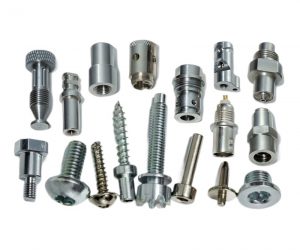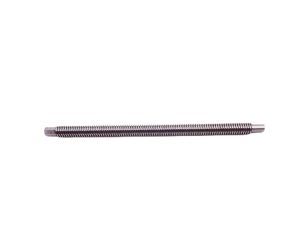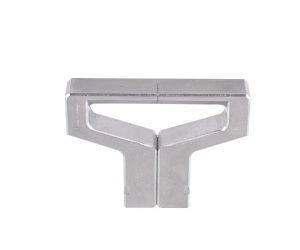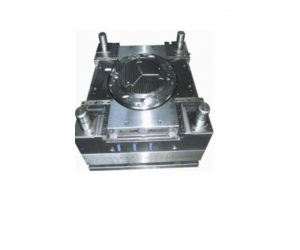Introduction
Unveiling the World of Small Plastic Gears
In the vast realm of mechanical components, small plastic gears stand as unassuming yet essential elements. Despite their diminutive size, these small plastic gears play a crucial role in an array of devices we encounter daily, from the delicate mechanisms within wristwatches to the intricate workings of modern electronics.
Think about your smartphone. Beneath its sleek exterior, small plastic gears are hard at work, enabling functions like the smooth scrolling of your screen or the precise adjustment of the camera's focus. In a similar vein, in a compact electric toothbrush, these gears are responsible for converting the motor's rotational energy into the rapid back - and - forth motion that cleans your teeth effectively. This shows just how integral small plastic gears are, even in the most familiar gadgets.
But their applications don't stop there. They are also key components in toys, allowing for the movement of various parts, adding an element of fun and interactivity. In medical devices, their precision ensures accurate dosage delivery or the smooth operation of diagnostic equipment. Given their wide - ranging uses, understanding the capabilities, characteristics, and applications of small plastic gears becomes not only fascinating but also highly practical. Whether you're an engineer looking for the right components for a project, a hobbyist tinkering with small - scale machinery, or simply someone curious about the inner workings of everyday devices, this exploration into small plastic gears will provide valuable insights.
The Basics of Small Plastic Gears
What Are Small Plastic Gears?
Small plastic gears are mechanical components with toothed wheels made from plastic materials. They are designed to transmit motion and power by meshing with other gears, either of the same or different types. These gears typically have a diameter ranging from a few millimeters to several centimeters, making them significantly smaller than their metal counterparts used in heavy - duty machinery.
The basic structure of a small plastic gear consists of a central hub, which is the core part that attaches to a shaft, and a series of teeth evenly spaced around the outer circumference of the hub. When two or more gears are engaged, the teeth of one gear fit into the spaces between the teeth of another gear. As one gear rotates, it causes the adjacent gear to rotate as well, thereby transferring rotational motion and torque. This principle is fundamental to the operation of countless mechanical systems, from simple clockwork mechanisms to complex robotic assemblies. For example, in a small - scale model car, the small plastic gears connect the motor to the wheels, allowing the car to move forward or backward by converting the rotational energy of the motor into linear motion of the wheels.
Materials Used in Small Plastic Gears
Several types of plastics are commonly used in the production of small plastic gears, each with its own set of characteristics that impact the gear's performance.
Nylon: Nylon is a popular choice due to its high strength - to - weight ratio, good wear resistance, and self - lubricating properties. It can withstand moderate loads and is relatively resistant to chemicals and moisture. For instance, in the gears of a small - scale 3D printer's extruder mechanism, nylon gears can operate smoothly while pushing the filament through the hot end, as their self - lubricating nature reduces friction and wear during continuous operation. However, nylon has a relatively high coefficient of thermal expansion. This means that in environments with significant temperature changes, the gear's dimensions can alter, potentially affecting its meshing accuracy with other gears.
Polyoxymethylene (POM): Also known as acetal, POM offers excellent dimensional stability, high stiffness, and low friction. It has a more uniform structure compared to nylon, which results in better precision in gear manufacturing. POM gears are often used in applications where high - precision motion transfer is required, such as in optical devices like cameras. In a camera's autofocus mechanism, POM gears ensure that the lens moves precisely to adjust the focus, as their low friction allows for smooth and accurate movement. But POM is less resistant to UV light and some chemicals compared to nylon, so it may not be suitable for outdoor applications or those involving exposure to certain corrosive substances.
Polypropylene (PP): PP is a cost - effective option with good chemical resistance and low density. It is often used in applications where cost is a major factor and the gears do not need to withstand high loads. For example, in some low - cost toys, PP gears are used to provide basic movement functionality. However, PP has relatively low mechanical strength compared to nylon and POM. So, in applications with high - torque requirements, PP gears may deform or break more easily.
Applications of Small Plastic Gears
In Electronics
Small plastic gears are indispensable in the electronics industry, where they enable precise motion control in a variety of devices. In small motors, which are found in countless electronic gadgets such as drones, small plastic gears play a crucial role. For example, in a quadcopter drone, the small plastic gears connect the electric motors to the propellers. These gears are designed to efficiently transfer the rotational force of the motor to the propellers, allowing for smooth and controlled flight. They need to be lightweight to keep the overall weight of the drone down, which is why plastic is an ideal material.
In camera lens adjustment systems, small plastic gears are also at work. Take a DSLR camera as an example. When you adjust the focus or zoom of the lens, small plastic gears inside the lens mechanism are responsible for the precise movement of the lens elements. These gears ensure that the lens can move smoothly and accurately to achieve the desired focus or zoom level. Their high precision is essential for capturing sharp and clear images. A misaligned or low - quality plastic gear could result in blurry photos or jerky lens movements.
In Toys and Hobbies
The world of toys and hobbies comes alive with the help of small plastic gears. In toy cars, small plastic gears are used to transfer the rotational motion from the motor (if it's a powered toy car) to the wheels. For instance, in a simple remote - controlled toy car, a small electric motor spins a shaft, and the small plastic gears connected to this shaft engage with gears on the axles of the wheels. This connection allows the car to move forward, backward, and turn. The use of plastic gears in toy cars not only keeps the cost down but also makes the cars lightweight, which is important for their mobility and speed.
Model robots are another area where small plastic gears shine. These gears are used to create the various moving parts of the robot, such as the joints in its arms and legs. In a humanoid model robot, small plastic gears at the elbow and knee joints enable the robot to bend and straighten its limbs, mimicking human movement. This adds an element of interactivity and fun to the model, making it more engaging for hobbyists. They can program the robot to perform different actions, and the small plastic gears ensure that these actions are executed smoothly.
In Medical Devices
In the medical field, small plastic gears are used in a variety of life - saving and health - improving devices. In insulin pumps, small plastic gears are crucial for accurately delivering the right dosage of insulin to diabetic patients. The gears are part of a precise mechanical system that controls the flow of insulin from the reservoir to the patient's body. They need to be highly accurate, as even a slight miscalculation in the dosage can have serious consequences for the patient's health. For example, if the gears malfunction and deliver too much insulin, it can lead to hypoglycemia, which can be life - threatening.
Small plastic gears are also used in some small surgical 器械. In minimally invasive surgical tools, such as those used in laparoscopic surgery, small plastic gears are used to control the movement of the instrument's end - effectors. These gears allow the surgeon to precisely manipulate the tool inside the patient's body, making small incisions and performing delicate procedures with greater accuracy. Additionally, the plastic materials used in these gears must meet strict biocompatibility requirements. This means that they cannot release any harmful substances into the patient's body, ensuring the safety of the patient during the procedure.
How to Choose the Right Small Plastic Gears
Consider Your Application Requirements
The first step in choosing the right small plastic gears is to clearly define your application requirements. If you're working on a project that requires high torque, such as a small - scale industrial mixer, you need to select gears that can handle the necessary force without deforming or breaking. For example, if the mixer needs to blend viscous substances, the gears must be strong enough to transfer the motor's power effectively. Torque requirements can be calculated based on the load the gears will have to drive, the speed of operation, and the type of movement (continuous or intermittent).
Speed is another crucial factor. In a high - speed application like a small fan motor, the gears need to be able to rotate at a fast pace without generating excessive heat or noise. High - speed rotations can put a lot of stress on the gears, so they must be designed to withstand the centrifugal forces and frictional forces associated with rapid movement.
Accuracy is also essential. In precision instruments such as a miniature measuring device, the gears need to provide extremely accurate motion transfer. Even a slight deviation in the gear's movement can lead to significant errors in the measurement results. For instance, in a high - precision optical encoder, the small plastic gears must ensure that the encoder disk rotates with utmost precision to provide accurate position or speed feedback.
Material Selection
Once you've determined your application requirements, the next step is to select the appropriate plastic material for the gears. As mentioned earlier, different plastics have different properties. If your application is in a humid environment, like a small water - treatment device, you might want to choose a material with good moisture resistance, such as nylon. Nylon's ability to resist moisture helps prevent swelling and degradation, ensuring the gears' long - term performance.
For applications where low friction is crucial, like in a small - scale conveyor system for delicate items, POM would be a better choice. Its low - friction properties allow the gears to operate smoothly, reducing the energy consumption and minimizing wear and tear on the system. This is especially important in applications where the gears need to run continuously for long periods.
If cost is a major constraint and the application doesn't require high - strength or high - precision performance, such as in some simple household gadgets, polypropylene could be considered. However, it's important to note the limitations of PP, such as its lower mechanical strength, and ensure that it can meet the basic requirements of the application.
Gear Design and Precision
The design of the small plastic gears is also a critical aspect. The tooth profile, pitch, and backlash all play important roles in the gear's performance. A proper tooth profile ensures smooth meshing between gears, reducing noise and vibration. For example, a standard involute tooth profile is commonly used in many applications as it provides good power transmission characteristics.
Pitch is the distance between corresponding points on adjacent teeth. Choosing the right pitch is essential as it affects the gear ratio and the overall performance of the gear system. Incorrect pitch can lead to poor meshing, increased wear, and reduced efficiency.
Backlash, which is the small amount of play between meshing gears, needs to be carefully controlled. In applications where precise positioning is required, such as in a robotic arm's joint mechanism, minimal backlash is crucial. High - precision gears with tight tolerances are available for such applications. These gears are manufactured using advanced techniques to ensure that the backlash is within the acceptable range, allowing for accurate and repeatable motion. In contrast, in applications where a small amount of backlash is acceptable, such as in some low - precision toy mechanisms, less expensive gears with a slightly larger backlash can be used. Overall, choosing gears that meet the required precision standards is vital, especially in applications where accuracy and smooth operation are of utmost importance.
Yigu Technology's View
As a non - standard plastic metal products custom Supplier, Yigu Technology has witnessed the growing demand for small plastic gears in various industries. The increasing miniaturization of devices and the pursuit of cost - effective solutions have led to a surge in the need for high - quality small plastic gears.
With years of experience in design and manufacturing, we are well - positioned to meet these demands. Our team of experts can work closely with clients to understand their specific requirements, whether it's for a unique gear design in a new electronic device or custom - made gears for a medical prototype. We use advanced techniques and high - quality plastic materials to ensure that the small plastic gears we produce not only meet but exceed industry standards.
From initial concept to final product, Yigu Technology provides comprehensive solutions. We are committed to delivering customized small plastic gears that can function optimally in different applications, helping our clients bring their innovative ideas to life. Whether it's a small - scale production run or a large - volume order, we have the capabilities to handle it efficiently and effectively.
FAQ
What are the common applications of small plastic gears?
Small plastic gears have a wide range of applications. In electronics, they are used in small motors of drones to transfer rotational force to propellers, and in camera lens adjustment systems for precise lens movement. In the toys and hobbies industry, they are found in toy cars to enable movement and in model robots to create moving joints. In medical devices, small plastic gears are crucial in insulin pumps for accurate dosage delivery and in some minimally invasive surgical tools for precise manipulation inside the patient's body.
How do I choose the right material for small plastic gears?
The choice of material depends on the application environment and performance requirements. If the application is in a humid environment, like a water - treatment device, nylon is a good choice due to its moisture resistance. For applications where low friction is crucial, such as a small - scale conveyor system for delicate items, POM is more suitable. When cost is a major constraint and high - strength or high - precision performance is not required, like in simple household gadgets, polypropylene can be considered, although its lower mechanical strength should be taken into account.
Can small plastic gears be used in high - load applications?
Small plastic gears have limitations in high - load applications. Their relatively low mechanical strength compared to metal gears means they may deform or break under high loads. However, in some cases where the high - load situation is not continuous or extremely severe, specially designed plastic gears with reinforcement or a more suitable material combination might be used. But generally, for high - load applications that require continuous operation and high - torque transmission, metal gears are often a better choice.





